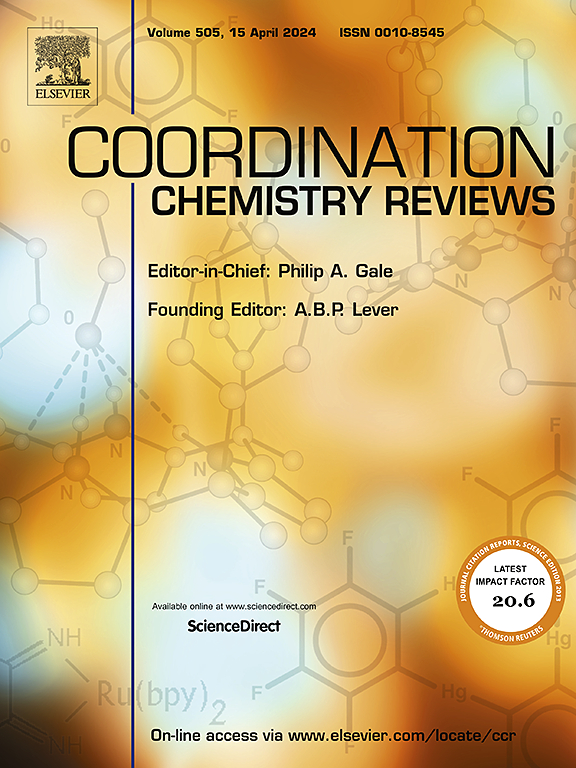柔性电子器件中的界面粘附:材料、结构和应用
IF 20.3
1区 化学
Q1 CHEMISTRY, INORGANIC & NUCLEAR
引用次数: 0
摘要
柔性电子产品具有轻薄、高适配性、多功能性和高便携性等特点,彻底改变了人类的交互体验。这一新兴技术也为智能制造、仿人机器人和数字医疗带来了突破性进展。然而,柔性电子产品的多种功能和应用往往需要在设备中集成多层接口。这种多层和多材料结构的组装经常面临界面不相容的挑战,包括机械性能、化学性质和功能的不匹配。这些挑战可能会影响设备界面或设备与人体组织/机器人之间界面的长期可靠性和效率。无缝集成的柔性电子设备不仅能降低界面分层的风险,还能增强设备在动态或多元环境中的机械稳定性。本手稿详尽评述了柔性电子器件中通过物理相互作用、共价化学键或结构设计实现的韧性界面。此外,考虑到它们的主要应用(皮肤可穿戴设备、植入式设备和机器人),我们深入探讨了与增强型粘合剂界面相关的最新突破、持续挑战和实用策略。这样的讨论为构思和制造高度耐用的柔性设备提供了宝贵的视角。本文章由计算机程序翻译,如有差异,请以英文原文为准。
Interfacial adhesion in flexible electronics: Materials, structures and applications
Flexible electronics, featuring low thinness, high conformability, multifunctionality, and high portability, have revolutionized the interaction experiences of human beings. This emerging technology is also ushering in groundbreaking advancements in intelligent manufacturing, humanoid robots, and digital medicine. However, the diverse functionalities and applications of flexible electronics often require integration of multilayer interfaces in devices. The assembly of such multilayer and multimaterial structures frequently faces challenges of interfacial incompatibilities of interfaces, including the mismatch in mechanical properties, chemistry, and functionalities. These challenges can compromise the long-term reliability and efficiency of either the interfaces in a device or the interface between a device and human tissues/robots. A seamlessly integrated flexible electronic device not only mitigates the risk of interfacial delamination but also enhances the mechanical stability of the device in dynamic or multifaceted environments. This manuscript offers an exhaustive review on tough interfaces in flexible electronics enabled by physical interactions, covalent chemical bonds or structural designs. Moreover, considering their primary applications — skin-wearables, implantable, and robotics — we delve into the latest breakthroughs, persistent challenges, and pragmatic strategies associated with reinforced adhesive interfaces. Such a discussion furnishes invaluable perspectives for the conceptualization and fabrication of highly durable flexible devices.
求助全文
通过发布文献求助,成功后即可免费获取论文全文。
去求助
来源期刊

Coordination Chemistry Reviews
化学-无机化学与核化学
CiteScore
34.30
自引率
5.30%
发文量
457
审稿时长
54 days
期刊介绍:
Coordination Chemistry Reviews offers rapid publication of review articles on current and significant topics in coordination chemistry, encompassing organometallic, supramolecular, theoretical, and bioinorganic chemistry. It also covers catalysis, materials chemistry, and metal-organic frameworks from a coordination chemistry perspective. Reviews summarize recent developments or discuss specific techniques, welcoming contributions from both established and emerging researchers.
The journal releases special issues on timely subjects, including those featuring contributions from specific regions or conferences. Occasional full-length book articles are also featured. Additionally, special volumes cover annual reviews of main group chemistry, transition metal group chemistry, and organometallic chemistry. These comprehensive reviews are vital resources for those engaged in coordination chemistry, further establishing Coordination Chemistry Reviews as a hub for insightful surveys in inorganic and physical inorganic chemistry.
 求助内容:
求助内容: 应助结果提醒方式:
应助结果提醒方式:


